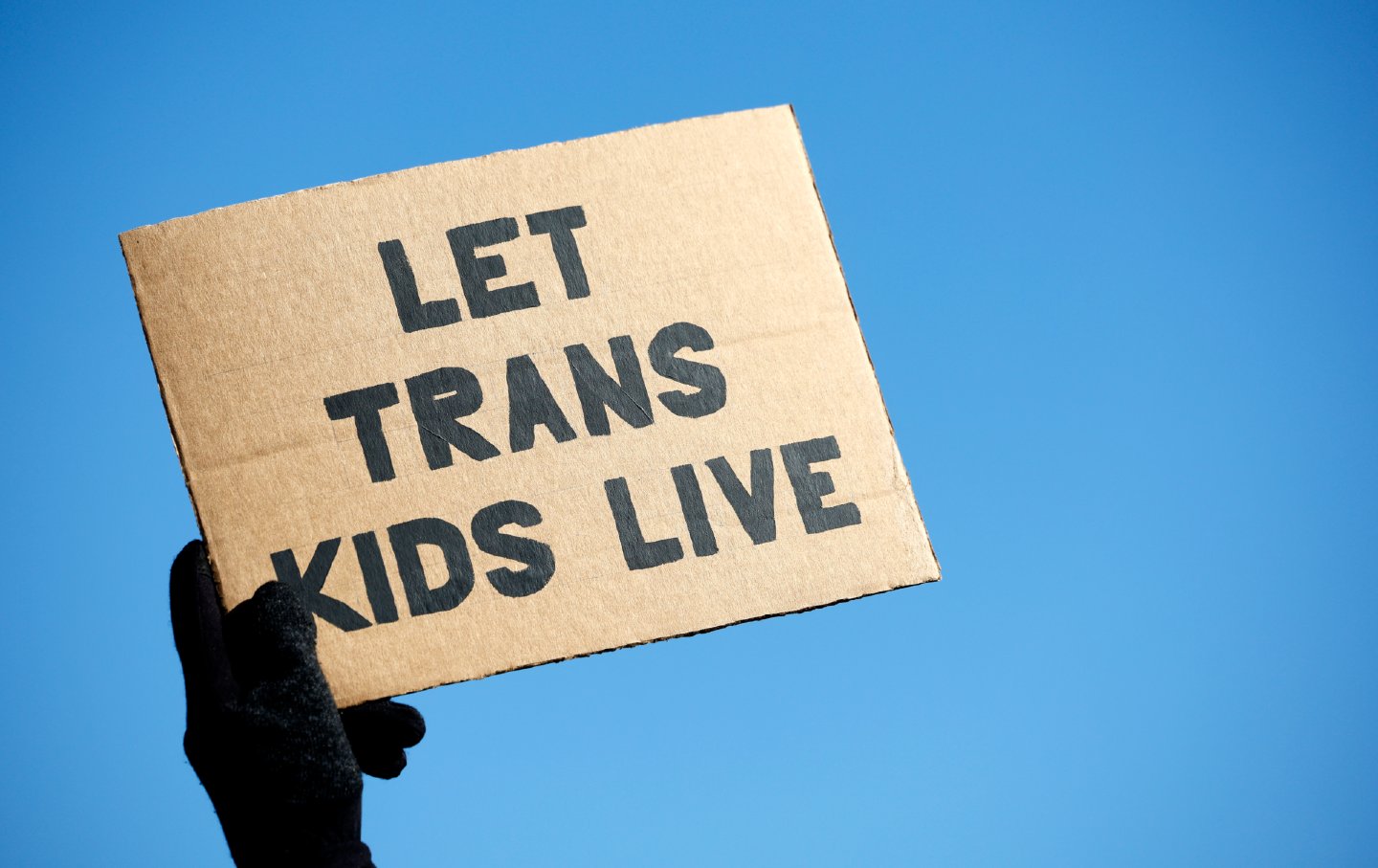The Snap
Sara Ahmed and the joys of killjoy feminism.
Sara Ahmed and the Joys of Killjoy Feminism
To be a feminist killjoy means celebrating a different kind of joy, the joy that comes from doing critical damage to what damages so much of the world.

Reading Sara Ahmed’s The Feminist Killjoy Handbook comes as a great relief—and not just to me: Upon reading it, my friends report laughing or crying with recognition and gratitude. For too many who are living in subjugated conditions, isolation and self-doubt can become corrosive. Reading Ahmed, one feels relief from living alone with the feeling that when one spoke up, one was too much, too direct, repeated the same thing too often, interrupted someone else’s offensive speech too many times, spoke when one knew the audience was either not listening or, worse, offering an occasional nod as an empty and pacifying gesture.
Books in review
The Feminist Killjoy Handbook: The Radical Potential of Getting in the Way
Buy this bookCurrently an independent scholar, Sara Ahmed is a leading theorist who works at the intersection of feminist, queer, and race studies and whose writing is acclaimed both inside and outside of the academy. Starting with her early books, Strange Encounters and The Cultural Politics of Emotions, she has sought to give meaning to dimensions of human life considered contingent or irrational (anger, pain, desire) in order to show that what we feel is related to aspects of the world to which we are responding.
In The Feminist Killjoy Handbook, Ahmed extends this inquiry. With astonishingly clear and economical prose, she examines the ways in which self-doubt and isolation—but also solidarity—can come from being part of a network of feminist “killjoys.” Retelling a series of stories about how she and other feminists have been shut down, gaslighted, and marginalized, she considers how these experiences are registered in the body—how being told over and over again that you are causing a problem can eventually lead you to snap. The snap can start out as personal—it is your snap—but when one comes to see that others are snapping all the time, one can find the joy of solidarity as well as the potential for social transformation.
The “snap” is a theoretical concept that Ahmed developed in her 2017 book Living a Feminist Life. For Ahmed, a snap is “a sudden movement,” a break, one that has been building for some time. In response to a racist or sexist remark, one objects, but then the fact that one objected, interrupted, or made an academic discussion more personal itself becomes the problem. Indeed, the feminist who speaks, especially if she is a woman of color, becomes the problem. A reversal takes place within seconds so that articulating the problem that one sought to identify and oppose makes one eligible to be silenced or removed. The snap marks the feminist refusal to accept being “the problem.” It marks a break with the framework that effaces and marginalizes feminist critique.
The snap almost always begins as an individual reaction, Ahmed tells us, but it does not need to stay that way. The snap happens at a particular time and through a specific kind of rejoinder or way of talking back. But when a woman snaps, when she loses her temper or persists with her perfectly justifiable point even when viewed as obstructionist, she enters into a collective moment, regardless of whether she knows she has company at the time. She joins the ranks of the feminist killjoys; she becomes part of a collective, if not a class.
The Feminist Killjoy Handbook examines this movement from isolation to collectivity. Written as a form of address, the book seems to ask on every page: Will you become a feminist killjoy? Are you already a feminist killjoy? Writing about scenes of potential humiliation and self-blame, Ahmed enjoins her readers to accept and even celebrate being killjoys. By doing so, she explains, you are in good company. In this way, her book is not only a handbook but a form of accompaniment.
Throughout The Feminist Killjoy, one learns about the many people who keep Ahmed company and who, in turn, can keep the reader company when becoming “excessive” is the only reasonable response to having one’s words demeaned or effaced. In a section titled “Killjoy Maxim: Become Monstrous!,” Ahmed discusses Alexis Pauline Gumbs’s Spill: Scenes of Black Feminist Fugitivity. Gumbs calls for feminists to be attentive to what spills out, or what spills over, “to words that spill, to liquid that spills out from a container, to being somebody who spills things.” And Ahmed agrees: Feminists need to embrace a politics that defies the subjugating consequences of a “civil” discourse that preserves the status quo of domination. Along these lines, Ahmed endorses the bad attitude of, say, trans-affirmative people toward those who fail to understand that transphobia is by definition anti-feminist. Ahmed embraces as well Verónica Gago’s call for a feminist strike against everything, refusing “the physical and psychic exhaustion that sustains extenuating precarity.” Later, Ahmed offers her own maxims for those looking for practical wisdom: “Those who are not ‘at home’ in certain categories tend to know more about them”; “Power works by making it hard to challenge how power works”; and one has to be “willing to cause unhappiness.”
Ahmed shares these maxims with a luminous and economical clarity that has become a signature of her widely admired writing and thinking. What makes that clarity no less than stupendous is that it is forged from pain and rage, the kind that is specific to oppression, without ever releasing a pure howl. I suspect that for many who struggle against oppression and find their words mangled and refused, the howl is hovering at the edge of speech. Perhaps it is right to say that Ahmed cultivates justified rage into a fierce exposition of that justification, that is, a persuasive exposé of the logic by which oppression works. Perhaps we can say: Where there is pain, there is resistance, or at least its possibility. If Ahmed is our guide, then resistance takes place through a language brimming with furious but careful insight, formulated as an invitation to join feminism’s ranks and swell its numbers. To be a killjoy can leave one lonely, but as Ahmed notes, it can also lead to community, recognition, and the potential for solidarity.
Much of Ahmed’s work has been inspired by the poetry and prose of Audre Lorde, especially her essay “The Uses of Anger: Women Responding to Racism,” and one can find that influence throughout The Feminist Killjoy Handbook. In it, Ahmed continues thinking in the midst of rage and lets that rage refine and reorient thinking itself. One breathes differently after having read Ahmed, as if a knot were released from the center of one’s chest, one previously endured as some nameless and inevitable pain in the body.
Over the course of her accomplished career, Ahmed has published on queer theory, on the cultural politics of emotion, on sexual harassment regulations, and on racial diversity efforts within universities. She has also established herself as a feminist and queer theorist of color unafraid to take on the subtle and damaging logics by which institutions, especially in higher education, operate, too often offering reforms that tend to intensify and deny the harms they are supposed to address and redress.
In The Feminist Killjoy Handbook, Ahmed continues to develop her philosophical views and to offer a subtle analysis of broken institutional promises. In her 2010 book The Promise of Happiness, she argued that “the good life” presupposes that certain kinds of objects and goods are first constituted as desirable, but we should ask: Why are these desirable and not others? Why is this life of consumption and conformity considered worthy of desire and not others?
Feminist killjoys do not, in general, accept the dictates of others about what they should be desiring and how they should define their happiness. I have always thought that the kid whose parents respond to their self-identification as queer with “Oh, but you will lead an unhappy life!” is being given the message that their life is bound to be unhappy if it fails to fulfill certain heteronormative ideals—reproduction, heterosexual marriage. It hardly matters that the kid is made unhappy by the parents’ worry that they will be unhappy. It is the worry that makes the kid unhappy; it is the first moment of the predicted unhappiness. Ahmed helps us to think this way, and she provides company as we develop thoughts such as these.
When the commonly accepted “good life” prescribes established purposes for women and queers, devaluing as “useless” or “unhappy” forms of love and attachment to other humans or animals outside the family framework, then the only way to find joy and community is by deviating from the prescribed path. The book is critical of dominant paradigms and their mutilating effects, but it also charts a different kind of joy, a critical joy in contest with normative ideas about how a life is supposed to be conducted, according to what desires, and in the quest of a questionable “happiness.” Ahmed affirms the deviating paths, the directions that fail to direct us, the sudden turns and unexpected discoveries of a path that figures another, more vibrant sense of freedom.
In this way, The Feminist Killjoy Handbook is philosophically oriented and activist, making firm its alliance with prison abolition, queer and trans rights, and anti-racism projects. There is no jargon to be found and no phrase left unconsidered. As a handbook, it shows how one can, and must, think in the midst of harrowing experiences of injustice registered at once in the body and in the world. Ahmed takes her reader by the hand, not as a paternalistic gesture but as one who has survived the story she is telling, knowing that it is not hers alone. Precisely at those moments of outrage when we suspect that all we can do is sputter in the face of those who refuse our words, Ahmed steps in to show us how to continue to speak and to think, although she never tells us what to say.
At one point, Ahmed recounts a story about a young woman who started an MA degree with the hope of proceeding to a PhD, only to be told that she should not. “That door is closed,” the woman observed. Ahmed knows that the empirical fact of tables and doors figures centrally in most introductions to philosophy. A professor pounds the table or points to the door, as if to show the incontrovertible fact of its material existence. And yet here, as the woman is ushered out of philosophy proper, those material objects assume a different meaning.
Popular
“swipe left below to view more authors”Swipe →Who still sits at the table? For whom is the door open? Ahmed repeats the phrase “that door is closed” and remarks, “This is a quite ordinary expression. But when she said it, I heard the sound of a door being shut. I noticed the door. When feminist killjoys become philosophers…we are more likely to notice doors when we can’t open them.” A door “is a border, an entry point,” but, she adds, it can also be “an exit point, a means to control who is coming and going.” The woman who was shown the door knows the power that closes the door. The closed door is not just a material fact but an expression, one that gives linguistic form to the power of exclusion.
Ahmed teaches us how to pause when something appalling has happened, or to snap and then trust that snap as an instance of insight, the occasion to see and name what we know to be true.
The Feminist Killjoy Handbook is clearly helpful instruction. It is a book you can learn from: Here, in its pages, is your community and networks. At the end of the book, Ahmed also offers recommended readings for budding killjoys, as if to say: “You are enraged by your employer, your institution, your family? Here are ways to think about it, and here is some solidarity for you as you find your way.” Conceptual analysis becomes accompaniment and empowerment.
Throughout, Ahmed offers a host of one-liners to accompany her feminist readers as they try to negotiate a social world largely bent on not hearing or honoring what they have to say: “When you have to fight for existence, fighting can become an existence”; “Just because they welcome you, it does not mean they expect you to turn up”; “Discomfort reveals worlds.” What she wants to impart is a form of knowledge that kills the joy of those whose version of “happiness” involves the degradation of others and the reproduction of oppression. But as Ahmed notes, to refuse that joy can also become a source of joy, for it paves the way for making a world free of oppression and for those collective efforts that stop building violent institutions and call for more fundamental changes that would realize freedom and equality in substantive ways.
To be a feminist killjoy, in other words, means celebrating a different kind of joy, a joy that comes from doing critical damage to what damages and knowing that by doing so, far from merely negating the world, one is making a world full of creativity, collaboration, company, equality, freedom, justice, and solidarity. It is also, in this book, a way of taking language by the hand to join a joyful and lucid struggle against injustice.
More from The Nation

My Dystopian Novel Predicted Trump 2.0 My Dystopian Novel Predicted Trump 2.0
SOLIS was meant to serve as a warning of what could come. With Trump’s reelection, it should serve as a blueprint for the bravery and activism needed to fight back.

President Biden Should Issue a Blanket Pardon of Undocumented Immigrants President Biden Should Issue a Blanket Pardon of Undocumented Immigrants
Protecting Trump’s enemies from prosecution just reinforces the idea of politics as retribution. Instead, Democrats should be defending his most vulnerable targets.

The Supreme Court’s Hearing on Trans Rights Was Bigotry Masquerading as Law The Supreme Court’s Hearing on Trans Rights Was Bigotry Masquerading as Law
The conservative majority spent much of the oral arguments for US v. Skrmetti trying to erase the trans community.

Will There Be a Bird Flu Epidemic Under Trump? Will There Be a Bird Flu Epidemic Under Trump?
H5N1 currently poses a real threat for human transmission. Meanwhile, Trump’s picks for public health roles don’t bode well for vaccination.

Trans Medicine’s “Merchants of Doubt” Trans Medicine’s “Merchants of Doubt”
There is plenty of uncertainty involved in gender-affirming care—as in most aspects of medicine. But the groups behind the Tennessee ban aren’t driven by science—or patient care.

Donald Trump’s Second Administration Will Be As Women-Hating as Ever Donald Trump’s Second Administration Will Be As Women-Hating as Ever
"Your body, my choice" is only the beginning.


